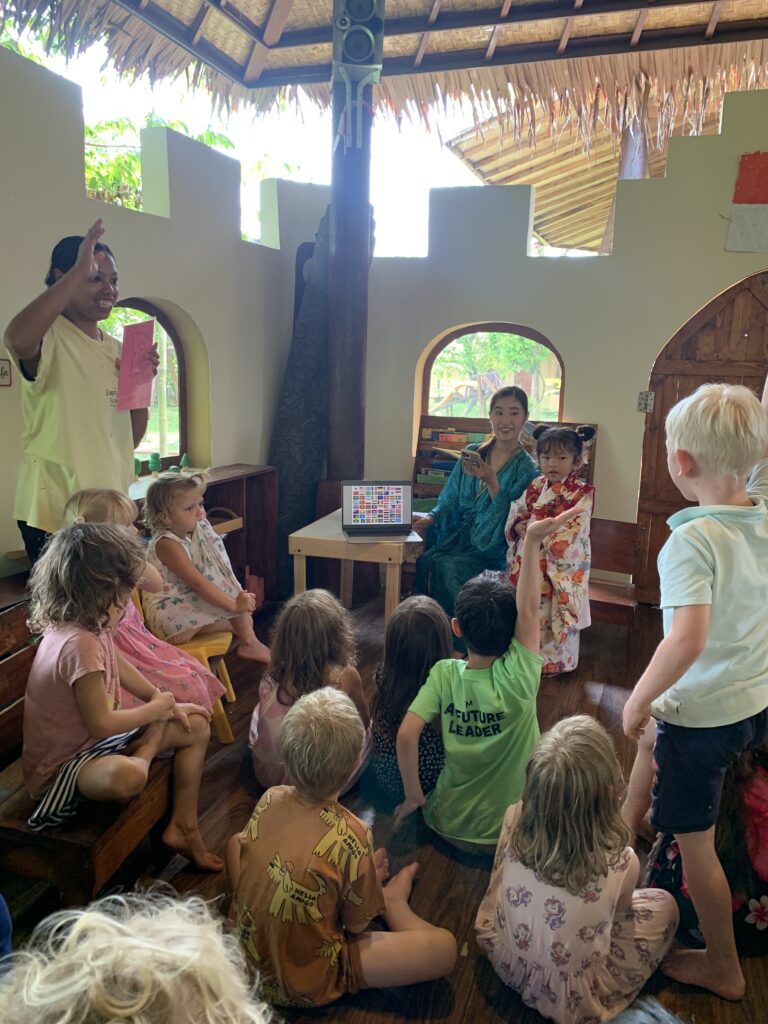In the bustling community of Empathy School, nestled on the edges of Ubud’s lush landscapes, Christine steps into her role not merely as a curriculum coordinator but as a bridge between the school’s verdant ideals and the tangible expectations of an educational framework. Her narrative, much like the winding paths of the surrounding rice terraces, reveals the complexity of integrating diverse educational philosophies under one roof.
Christine’s day-to-day is a delicate ballet of orchestrating nature-based activities that align with the rigorous objectives of the Cambridge curriculum. This balance is not just academic; it extends to navigating the intricate human landscape of her students, a microcosm of the world at large, with children from various linguistic and cultural backgrounds converging in a single classroom.
At Empathy School, the challenges are as diverse as its student body. From managing behavioral expectations to addressing undiagnosed sensory integration dysfunctions, Christine’s role transcends the traditional boundaries of curriculum coordination. The school’s ethos of embracing students with open arms is noble, yet it places an unforeseen burden on teachers unaccustomed to such diversity, particularly when language barriers introduce an additional layer of complexity.
The story of Empathy School’s growth from a small community of fifty students to a bustling hub of over a hundred encapsulates more than just an increase in numbers; it mirrors the escalating need for structured safety and security measures within an environment that values freedom and individual exploration.
One might wonder how Christine, with her background as an outside contractor specializing in project-based learning, adapts to these multifaceted challenges. Her strategy is one of immersive adaptation, where teachers and students alike are encouraged to swim rather than sink in the rich cultural amalgam of the school.
The linguistic diversity within the classroom, where a child from China might share a desk with another from the Netherlands, presents unique challenges that Christine addresses with a mix of strategic planning and serendipitous staffing. The recent arrival of interns from the Netherlands, just as two Dutch-speaking students enroll, is a stroke of fortune that highlights the unpredictable, yet somehow harmonious, nature of life at Empathy School.
Christine’s thoughtful approach to scheduling exemplifies her deep understanding of the students’ needs. Recognizing that the sweltering Balinese afternoons drain the children’s energy, she schedules academically demanding subjects like math for the morning, when young minds are freshest. The afternoons are reserved for creative pursuits like clay and music, which align better with the children’s post-lunch energy levels.
Perhaps the most poetic aspect of her methodology is the integration of nature into the curriculum. The school’s environment, with its big shady trees and the mist-filled tunnel where overheated children can cool down, is not just a backdrop but an active participant in the educational experience. Christine’s vision extends beyond the conventional classroom walls to include the natural world as a vital educational tool.
In Christine’s narrative, the essence of Empathy School’s approach to education is vividly illustrated. It is a place where differences are not just acknowledged but celebrated; where the curriculum is tailored not only to educate but to understand and adapt to the intrinsic needs of each child. Under her guidance, Empathy School is more than an institution; it’s a living, breathing organism that grows and evolves with each passing day.
Through her eyes, we see a world where education is not confined to textbooks and tests, but intertwined with the rhythms of nature and the diverse tapestries of human experience. Christine’s Empathy School is a testament to the belief that education can be transformative, adaptive, and above all, empathetic to the needs of every child.


 Previous Post
Previous Post